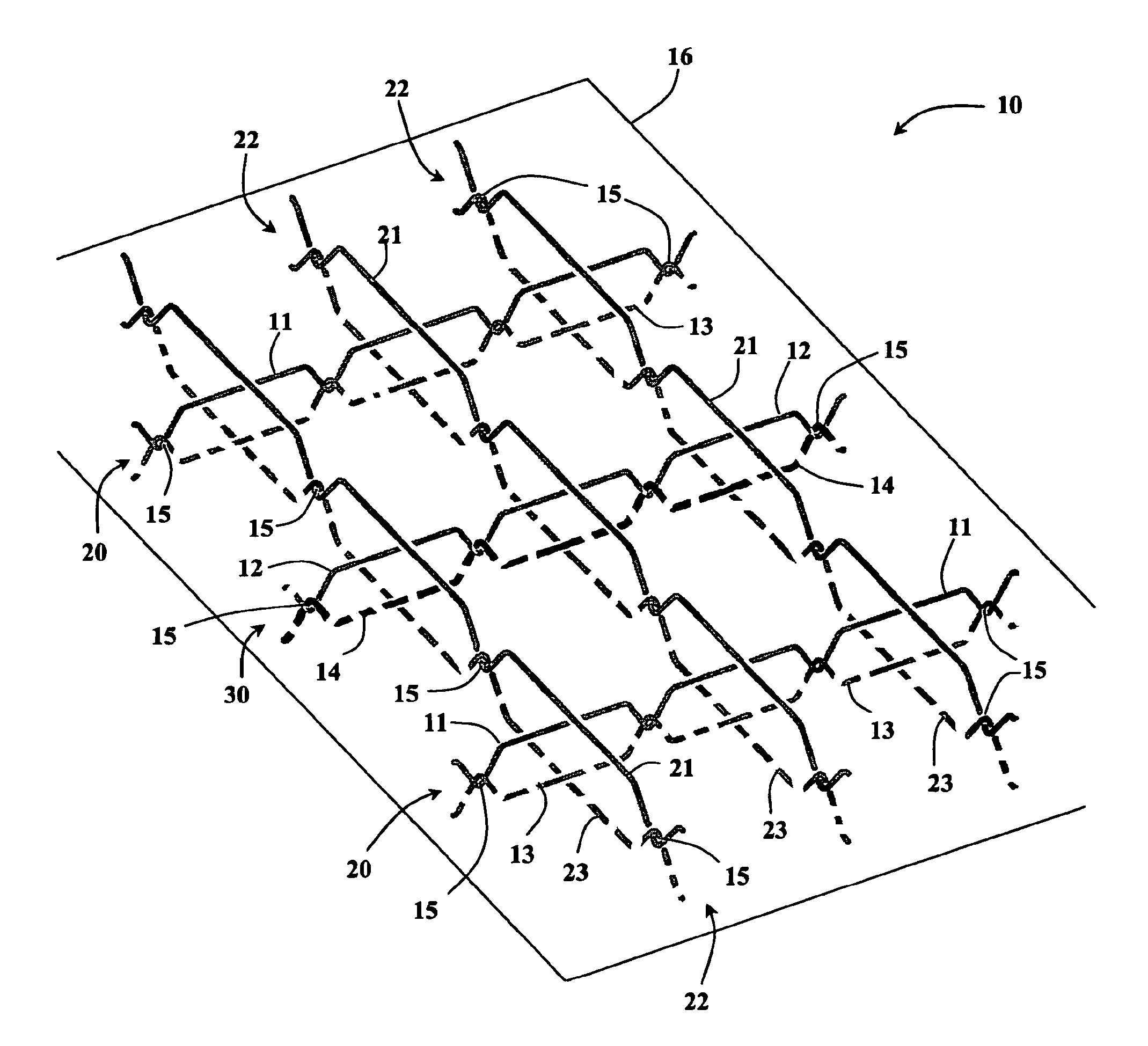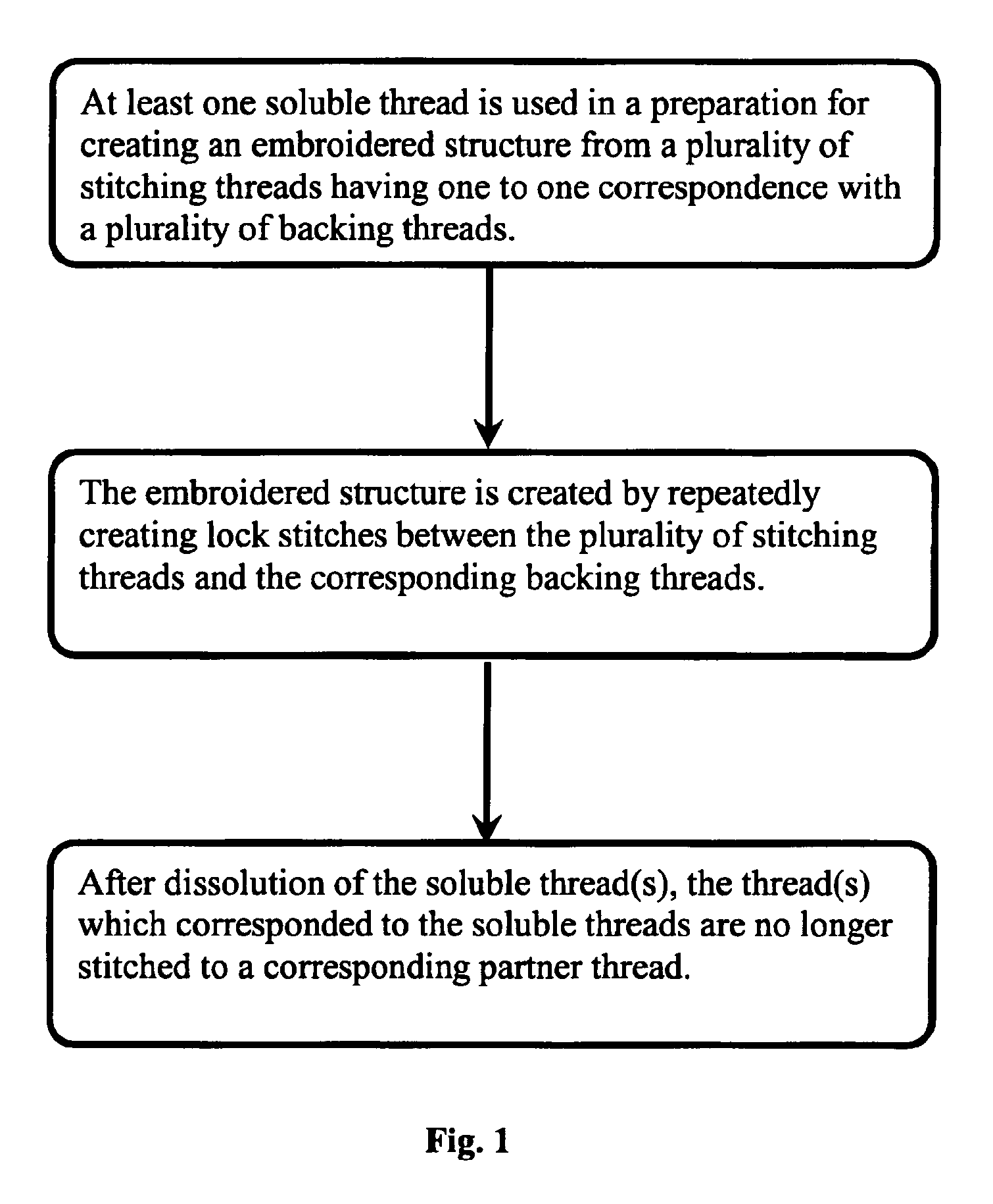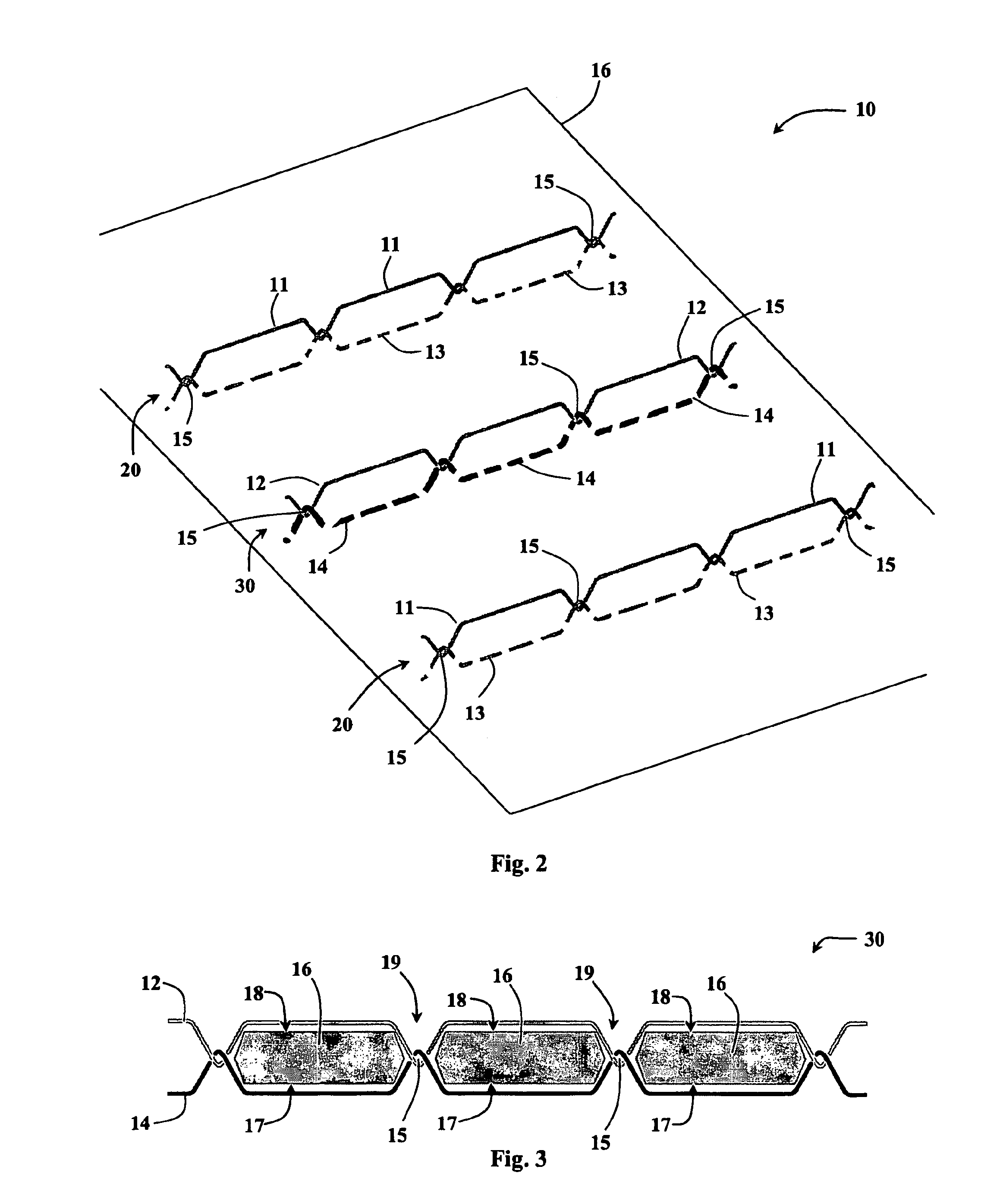Embroidery using soluble thread
a technology of soluble thread and embroidery, applied in the field of embroidery using soluble thread, can solve the problems of unreliability, inability to repeat, and inability to achieve the effect of ensuring the quality of embroidery, increasing the cost of manufacturing, and high repeatability of lace within the embroidered structur
- Summary
- Abstract
- Description
- Claims
- Application Information
AI Technical Summary
Benefits of technology
Problems solved by technology
Method used
Image
Examples
first embodiment
[0059]FIG. 6 depicts an example of an embroidered structure 40 according to the present invention. The embroidered structure 40 is shown by way of example as being generally flat, having a generally circular shape, and containing a series of laces 12 placed into the embroidery by the process of manufacture described above. The laces 12 are substituted for some of the stitching threads and soluble threads are substituted for the corresponding backing threads. The lace threads 12 and soluble threads are then stitched together forming temporary thread pairs while the remaining stitching threads and backing threads are stitched together forming a plurality of thread pairs 20. The thread pairs 20 and temporary thread pairs may then be enclosed by enclosing thread pairs 22 formed from enclosing stitching threads and enclosing backing threads. When the embroidering is completed, the soluble threads may be dissolved and the substrate may be removed. After dissolution of the soluble threads ...
second embodiment
[0061]FIG. 8 depicts an example of an embroidered structure 50 according to the present invention. The embroidered structure 50 is shown by way of example as being a generally flat, generally rectangular structure through which more than one lace 12 has been placed by the process of manufacture described above. The rectangular embroidered structure 50 necessarily has four edges; two shorter edges 52 and two longer edges 54. In this embodiment, the laces 12 run parallel to the two short edges 52 from one long edge 54 to the other long edge 54. Alternatively, the embroidered structure 50 could be arranged such that the laces 12 could run between short edges 54 parallel to the long edges 52, in which case the resulting cylindrical shape (see below) would be short and wide.
[0062]FIG. 9 illustrates the effect of tensioning and tying together the opposing ends of the laces 12 contained within the embroidered structure50 from FIG. 8. The laces 12 as laid out in the embroidered structure 50...
third embodiment
[0063]FIG. 10 depicts an example of an embroidered structure 60 according to the present invention. The embroidered structure 60 is shown by way of example as being a generally flat, generally rectangular structure through which a single lace 12 was placed multiple times by the process of manufacture described above. The generally rectangular embroidered structure 60 necessarily has four edges; two short edges 62 and two long edges 64. In this embodiment, the lace 12 runs generally diagonally from one long edge 64 to the other long edge 64, then around the outside of the embroidered structure 60 and back to the first long edge 64 where it enters the embroidered structure again. In an alternative embodiment, the lace 12 could be run between the short edges 62 to result in a differently dimensioned structure than the one described below.
[0064]As shown in FIG. 11, a three-dimensional, generally cylindrical embroidered structure 60 may be formed by tensioning the lace 12 of the embroide...
PUM
 Login to View More
Login to View More Abstract
Description
Claims
Application Information
 Login to View More
Login to View More - R&D Engineer
- R&D Manager
- IP Professional
- Industry Leading Data Capabilities
- Powerful AI technology
- Patent DNA Extraction
Browse by: Latest US Patents, China's latest patents, Technical Efficacy Thesaurus, Application Domain, Technology Topic, Popular Technical Reports.
© 2024 PatSnap. All rights reserved.Legal|Privacy policy|Modern Slavery Act Transparency Statement|Sitemap|About US| Contact US: help@patsnap.com










